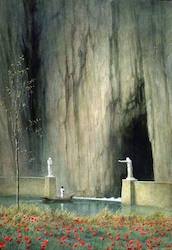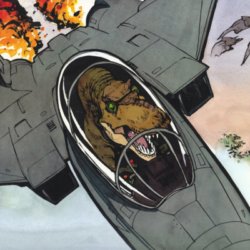In designing Teotihuacán {translated: “the place where men become gods”}, the city’s architects had arranged the major monuments on a north-south axis, with the so-called “Avenue of the Dead” linking the largest structure, the Temple of the Sun, with the Ciudadela, the southeasterly courtyard that housed the Temple of the Plumed Serpent. Gómez knew that archaeologists had previously discovered a narrow tunnel underneath the Temple of the Sun. He theorized that he was now looking at a kind of mirror tunnel, leading to a subterranean chamber beneath the Temple of the Plumed Serpent. . . .
...
Gómez set about making his plans. ... with the help of the National Institute of Anthropology and History arranged for the delivery of a . . . ground-penetrating radar device. Beginning in the early . . . 2004, he and a handpicked team of some 20 archaeologists and workers scanned the earth under the Ciudadela . . . . By 2005, the digital map was complete.
As Gómez had suspected, the tunnel ran approximately 330 feet from the Ciudadela to the center of the Temple of the Plumed Serpent. The hole that had appeared during the 2003 storms was not the actual entrance; that lay a few yards back, and it had apparently been intentionally sealed with large boulders nearly 2,000 years ago. Whatever was inside that tunnel, Gómez thought to himself, was meant to stay hidden forever.
...
In 2009, the government granted Gómez permission to dig, and he broke ground at the entrance of the tunnel . . . . Nearly 1,000 tons of earth were removed from the tunnel . . . .
The haul was tremendous. There were seashells, cat bones, pottery. There were fragments of human skin. There were elaborate necklaces. There were rings and wood and figurines. Everything was deposited deliberately and pointedly, as if in offering. The picture was coming into focus for Gómez: This was not a place where ordinary residents could tread.
A university in Mexico City donated a pair of robots . . . to inspect deeper inside the tunnel, including the final stretch, which descended, on a ramp, an extra ten feet into the earth. Like mechanical moles, the robots chewed through the soil, their camera lights aglow, and returned with hard drives full of spectacular footage: The tunnel seemed to end in a spacious cross-shaped chamber, piled high with more jewelry and several statues.
...
Gómez has one more crucial task to undertake: the excavation of three distinct, buried sub-chambers located below the resting place of the figurines, the final sections of the tunnel complex as yet unexplored. Some scholars speculate that the elaborate ritual offerings on display here, and the presence of pyrite and mercury, which held known associations with the supernatural among ancient Mesoamericans, provide further evidence that the buried sub-chambers represent the entryway to a particular type of underworld: the place where the city’s ruler departed the world of the living. ...
For Gómez, the sub-chambers, whether they are filled with more ritual relics, or remains, or something entirely unexpected, might be best understood as a symbolic “tomb”: a final resting place for the city’s founders, of gods and men.
A Secret Tunnel Found in Mexico May Finally Solve the Mysteries of Teotihuacán
-
de officiis

- Posts: 2528
- Joined: Wed Nov 30, 2016 11:09 am
A Secret Tunnel Found in Mexico May Finally Solve the Mysteries of Teotihuacán
A Secret Tunnel Found in Mexico May Finally Solve the Mysteries of Teotihuacán

-
Speaker to Animals

- Posts: 38685
- Joined: Wed Nov 30, 2016 5:59 pm
Re: A Secret Tunnel Found in Mexico May Finally Solve the Mysteries of Teotihuacán
Or maybe it was the Olmec inhabitants of the city before the Aztecs took over. They sacrificed them to their gods and buried them there along with their possessions in some kind of sacramental act.